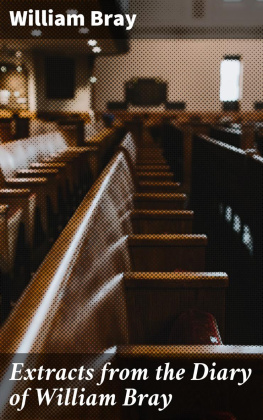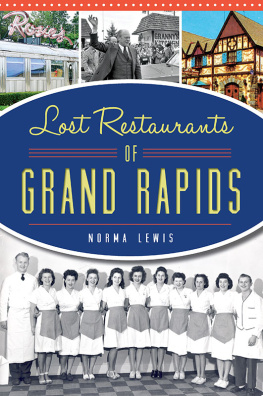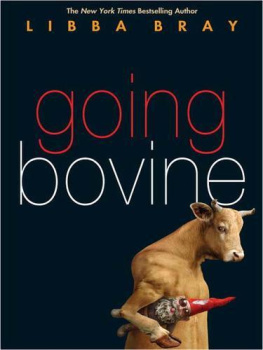Published by Haunted America
A Division of The History Press
Charleston, SC 29403
www.historypress.net
Copyright 2013 by Nicole Bray, Reverend Robert Du Shane and Julie Rathsack
Cover photos courtesy of Bradley Donaldson.
All rights reserved
First published 2013
e-book edition 2013
Manufactured in the United States
ISBN 978.1.62584.674.7
Library of Congress CIP data applied for.
print edition ISBN 978.1.62619.205.8
Notice: The information in this book is true and complete to the best of our knowledge. It is offered without guarantee on the part of the author or The History Press. The author and The History Press disclaim all liability in connection with the use of this book.
All rights reserved. No part of this book may be reproduced or transmitted in any form whatsoever without prior written permission from the publisher except in the case of brief quotations embodied in critical articles and reviews.
INTRODUCTION
We all know that Grand Rapids is home to many ghosts. What most people do not know, however, is that tales of ghostly encounters, vanishings and other mysterious activities veiled the city of Grand Rapids, Michigan, long before it was officially established in 1850.
At the turn of the eighteenth century, the neighboring Native Americans labeled the land on which the city now sits, the Haunted Valley of the Grand. They strongly believed that evil spirits roamed the entire area. It was not uncommon for individuals or occasionally entire hunting parties to vanish in the woods along the Grand River, many of them never to be seen or heard from again.
While the vast forests have been replaced over time with concrete, bricks and glass, many believe that the malicious ghosts experienced by the Native Americans still roam this land, wreaking havoc on the living.
Is the city of Grand Rapids cursed? Many people believe it is. After reading the following chapters, you can draw your own conclusion.
CHAPTER 1
BRIEF HISTORY OF GRAND RAPIDS
In order to appreciate the haunted side of Grand Rapids, it helps to know just what the land has been through. Grand Rapids has been home to many different people throughout its history. Settlers have long been drawn to the moderate climate, rich soil and vast supply of fresh water.
The first people to settle in this area laid their roots over ten thousand years ago. These settlers were a migratory people who followed the roaming mastodons and mammoths at the end of the last ice age. As the glaciers melted away, the climate started to become more inhabitable. The ice gave way to vast forests containing edible plants, small game and an abundance of fish.
Over 2,500 years ago, the Grand River Valley was occupied by Native Americans known to historians simply as the Mound Builder Indians because of the large mounds they left wherever they settled. The tribe had migrated to the area from the Mississippi River Valley. They traveled through Illinois and settled in Michigan as far north as the Muskegon River. The Mound Builders were a peaceful tribe and survived almost entirely by cultivating the land. Their presence is still evident today by the preserved mounds on the southwest side of Grand Rapids. Local historians theorize that the first major act of violence occurred in this area when another Native American tribe traveled down from the north and exterminated the Mound Builder Indians. Although no one is completely sure which tribe wiped them out, those who have examined Michigans earliest written records believe it was the Sioux Indians.
Approximately three hundred years ago, the Ottawa Indians were forced west by the Iroquois and settled along the Grand Rivers edge. The Chippewa were just to the north, and the Pottawatomie were just south. These three tribes made up a group called the People of the Three Fires.
During the seventeenth and eighteenth centuries, as the Europeans and Americans struggled to control the area, the People of the Three Fires were often forced to choose sides during the battles, all the while trading furs for textiles, metals and other useful goods. In just two generations time, control shifted from the French to the British and eventually to the Americans.
During this power struggle, the natives found their once lucrative fur trade becoming more restricted. What started as the open trade system used by the French transitioned to the British licensing system. Finally, the Americans took not only the furs but also the land occupied by the Ottawa Indians. By the beginning of the nineteenth century, the transition from Indian country to United States territory was complete. Between 1821 and 1836, a series of treaties were signed that extinguished the majority of all Indian claims to the land in Michigan. This was unfortunate for the natives as it left much of the state open to be snatched up by the often greedy and land-hungry settlers.
In 1825, Grand Rapids first permanent resident, Isaac McCoy, set up a Baptist mission within the area known as the Rapids of the Grand. He was soon followed by a Roman Catholic priest named Father Frederic Baraga, who established a Catholic mission nearby.
Other settlers came to the area in search of riches. Two of the best examples of these pioneers were Rix Robinson, an agent of the American Fur Company, and independent fur trader Louis Campau. Both of these men moved to the area in hopes of collecting pelts and opened trading posts to compete for the furs. Louis Campau was the victor and became known to the Ottawa tribe as the Fox due to his shrewd trading skills.
Campau had moved from his birthplace in Detroit in 1826 to establish his trading post along the east bank of the Grand River, where he also built a cabin and blacksmith shop. Louis Campau would later become known as the founder of Grand Rapids. His success as a trader allowed him to acquire a small fortune. In 1831, he purchased seventy-two acres from the federal government for ninety dollars. Campau named this village Grand Rapids. It is on this land that the entire downtown business district, bordered by the Grand River, Division Avenue, Fulton Street and Michigan Street, sits today. Not to be outdone, a local land surveyor named Lucius Lyon bought the land to the immediate north of Campaus land and named it the village of Kent.
The fallout from the feud between Campau and Lyon is still felt by local commuters to this day. Campau, who had an established relationship with the Ottawa tribe, laid out his main street Monroe Avenue along the principal Indian trail that led diagonally from the river to his trading post. Lyon, a surveyor, laid out his streets in the more generally accepted grid style with the streets running in the directions of a typical compass.












